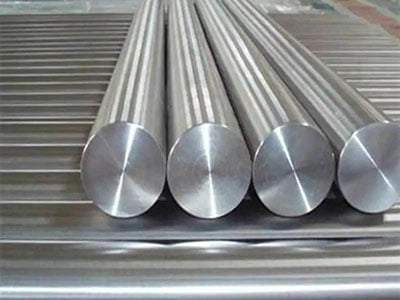Introduction
Stainless steel is not a single alloy but rather a family of steels defined by their chromium content, typically ranging from 10.5% to 18%. This chromium content, in conjunction with other alloying elements, imparts stainless steel with its remarkable corrosion resistance, preventing the formation of a rust-like oxide layer that would otherwise degrade the material.In this guide, we’ll decode the grades of stainless steel to help you understand their differences and applications.
Decoding Grades of Stainless Steel: A System of Numbers and Letters

The vast array of stainless steel grades is categorized using a standardized numbering system developed by the American Iron and Steel Institute (AISI). This system utilizes a combination of numbers and letters to convey essential information about the alloy’s composition and structure.
- The First Digit: The first digit indicates the steel’s family, with 2, 3, 4, and 5 representing austenitic, ferritic, martensitic, and duplex stainless steels, respectively.
- The Second and Third Digits: The second and third digits represent the nickel content, with each digit corresponding to one decimal point of nickel. For instance, 304 stainless steel contains 18% chromium and 8% nickel.
- The Fourth Digit: The fourth digit, if present, indicates the addition of other alloying elements, such as molybdenum (indicated by a 3) or nitrogen (indicated by a 4).
- The Prefix: Some stainless steel grades may have a prefix, such as “S” for stabilized or “L” for low carbon content.
Common Grades of Stainless Steel and Their Applications
The vast array of stainless steel grades caters to a wide spectrum of applications. Here’s a glimpse into some common grades and their uses:
| Grade | Composition | Characteristics | Applications |
|---|---|---|---|
| 304 | 18% Cr, 8% Ni | Versatile, corrosion-resistant, formable | Food processing, appliances, medical devices |
| 316 | 18% Cr, 10% Ni, 2% Mo | Enhanced corrosion resistance, especially in chloride environments | Marine applications, chemical processing, pharmaceuticals |
| 430 | 18% Cr | Ferritic, magnetic, economical | Automotive trim, appliances, decorative applications |
| 420 | 13% Cr | Martensitic, hard, wear-resistant | Cutlery, tools, surgical instruments |
| 17-4PH | 17% Cr, 4% Ni, Copper | Precipitating hardening, high strength, corrosion-resistant | Aerospace, defense, medical implants |
Understanding the Properties of Stainless Steel Grades
Beyond their numerical designations, stainless steel grades exhibit a range of properties that influence their suitability for specific applications:
- Corrosion Resistance: The ability to withstand environmental attack, particularly from chemicals and moisture.
- Strength: The ability to withstand loads and forces without breaking or deforming.
- Formability: The ability to be shaped into various forms without cracking or tearing.
- Weldability: The ability to be joined using welding techniques.
- Heat Resistance: The ability to maintain its properties at elevated temperatures.
Selecting the Right Grade of Stainless Steel: A Matter of Application

Choosing the appropriate grades of stainless steel depends on the specific requirements of the application. Factors to consider include:
- Environment: The type of chemicals, moisture, or temperature the material will encounter.
- Mechanical Requirements: The strength, ductility, and formability needed for the application.
- Fabrication Methods: The welding, machining, or forming processes involved.
- Cost Considerations: The balance between material cost and performance requirements.
Conclusion: Grades of Stainless Steel
The realm of stainless steel grades offers a diverse array of materials, each with its unique properties and applications. By understanding the grading system, decoding the designations, and considering the relevant properties, you can make informed decisions about the right stainless steel grade for your specific needs. Whether you’re an engineer designing a critical component or a manufacturer selecting materials for a production process, this guide has empowered you to navigate the world of stainless steel grades with confidence.
FAQ
Q: What is the difference between 304 and 316 stainless steel?
A: The main difference between Grade 304 and Grade 316 stainless steel lies in their composition. Grade 316 contains additional alloying elements, such as molybdenum, which enhance its corrosion resistance, particularly in harsh environments.
Q: Which stainless steel grade is best for outdoor applications?
A: Grade 316 stainless steel is often preferred for outdoor applications due to its superior corrosion resistance, making it suitable for exposure to moisture, salt, and other environmental factors.
Q: Can stainless steel grades be heat treated for improved mechanical properties?
A: Yes, certain stainless steel grades can undergo heat treatment to enhance their mechanical properties, such as hardness and strength. However, not all grades are suitable for heat treatment, and the process may affect the material’s corrosion resistance.
Q: Are there specific considerations when welding different grades of stainless steel together?
A: Yes, welding different grades of stainless steel together requires careful consideration to prevent issues such as intergranular corrosion and weld decay. It’s essential to use appropriate welding techniques, filler materials, and post-weld treatments to maintain the integrity of the welded joints.
Q: How can I identify the grade of stainless steel used in a particular application?
A: Stainless steel grades are typically identified using standard markings, such as ASTM or AISI designations, which are stamped or engraved on the material. Additionally, chemical composition and physical properties can help differentiate between different grades.
Q: What are the factors to consider when selecting a stainless steel grade for high-temperature applications?
A: When choosing a stainless steel grade for high-temperature applications, factors to consider include the material’s resistance to oxidation and scaling at elevated temperatures, thermal expansion coefficient, and mechanical properties at operating temperatures.
Q: Are there environmental considerations associated with different stainless steel grades?
A: Yes, environmental considerations may vary depending on the specific stainless steel grade and its application. Some grades may contain alloying elements that pose environmental risks if not properly managed during manufacturing, use, and disposal. Additionally, stainless steel recycling practices can contribute to environmental sustainability.
